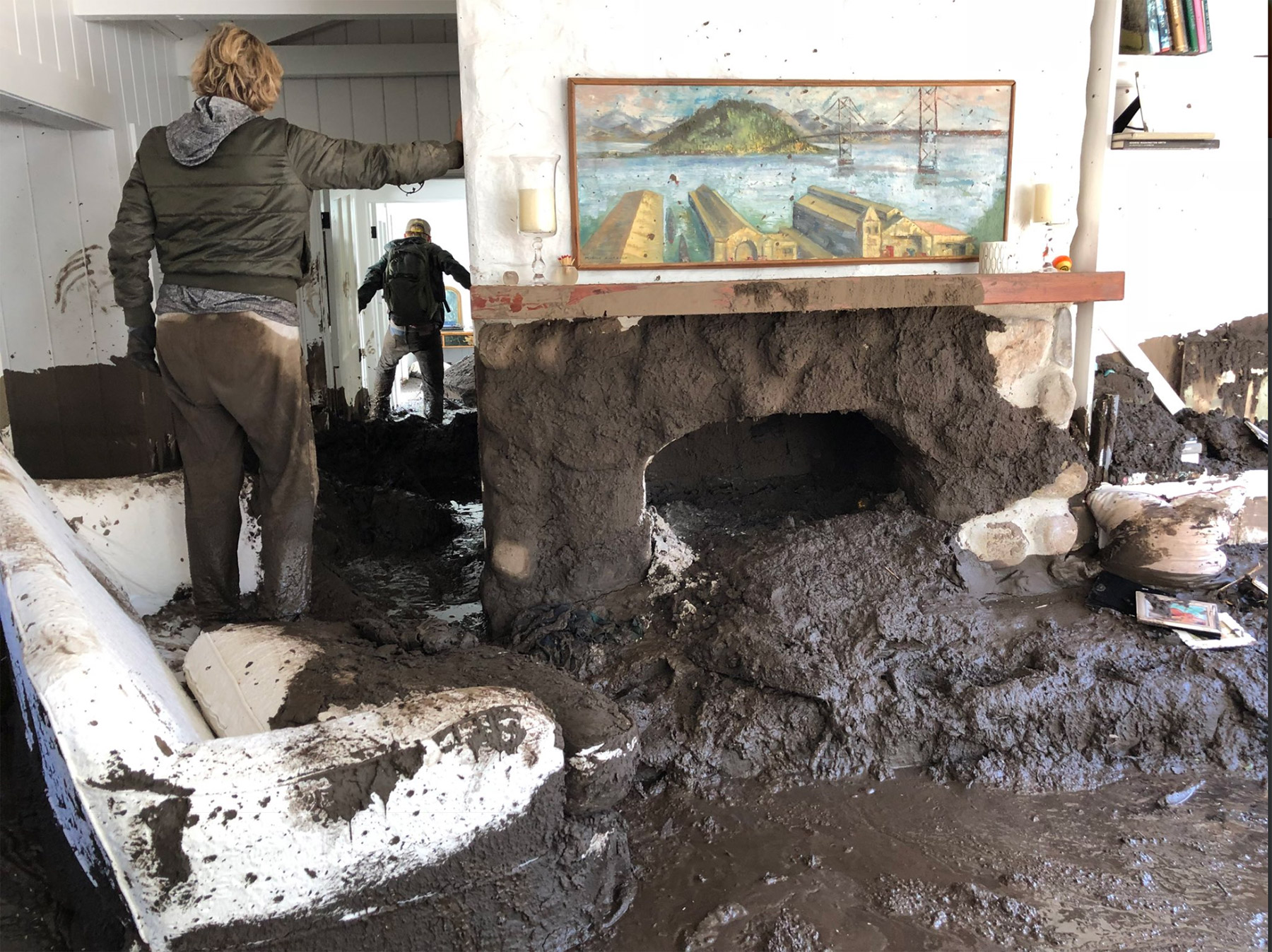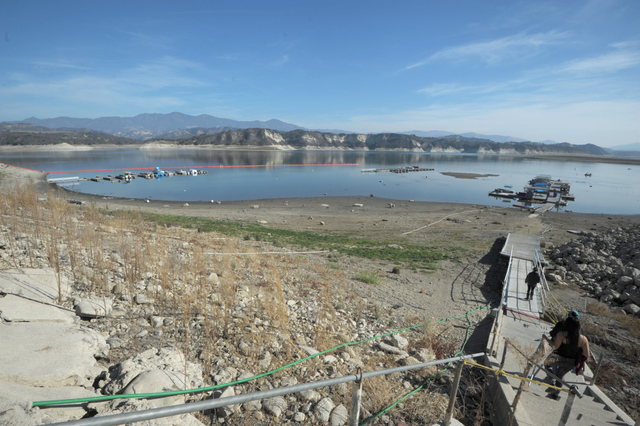Climate Change Hits Home in Montecito Disaster
The Cumulative Effects of Drought, Fire, and Flood Reflect the Planet’s New Extreme Weather Regime

There was little “natural” about the January 9 natural disaster that killed 23 Montecitans and forever altered the South Coast landscape. A one-two-three punch of extreme and irregular weather events turned one of the country’s wealthiest zip codes inside out, proving none of us are safe from the devastating effects of a changing global climate.
Leah Stokes, a climate policy researcher at UC Santa Barbara, acknowledges it’s difficult to find perspective when the wounds are still so fresh. But it’s critical, she said, to consider the bigger picture to understand what really happened so we can better protect ourselves in the future.
Too often, Stokes said, there’s no mention of climate change after the latest record-breaking hurricane, fire, or flood. We miss the opportunity to demand action from our leaders and consider the changes we can make on our own. It’s time to realize climate change is happening right now, all the time, in our backyards, she said. It’s time to connect the dots.
Help us understand in climate terms what happened in Montecito. It wasn’t just the drought; it wasn’t just the fire; it wasn’t just the rain. It was the compound effect. Climate change causes all kinds of abnormal events — you can really think of it as “climate disruption” or “global weirding.”

Let’s start with the California drought and how bad it’s been. It used to be hard to say any specific event was caused by climate change, but the science is actually getting good enough that we can do that now. There was an amazing research paper published in 2015 that showed how much climate change has contributed to the drought. They were able to put an actual number on it, which is incredible. Obviously, the drought leads to the die-back of trees and all kinds of plants. That increases the fire load. And you have to remember while most of the state is out of the drought, Santa Barbara County is not. We’re in year seven now.
A separate paper in 2016 talked about the two big fire regimes in California — in summer and winter — and how winter fires are getting worse as a function of climate change. That has to do with shifting weather patterns and stronger winds. We really saw that with the Thomas Fire, right, when it just blew up that Saturday night? We also saw it in Northern California, where the fires moved so quickly because of the wind and just burned out entire neighborhoods.
Then there’s the extreme precipitation. Again, in California, we’re able to show through research that extreme rainfall events are getting more frequent. The volume and intensity of the rain that fell over Montecito — half an inch in five minutes — is an insane amount. That same night, Sacramento set a record for overnight rainfall.
You’ll sometimes hear people say, “Oh, we’ve had droughts like this in the past,” or, “That rain was just a freak thing. That’ll happen.” No. This is evidence of a new distribution of extreme events that we would have never seen under the previous climate.
So how do we prepare ourselves in this new climate reality? We should always do our very best to protect people, but when climate change is creating these massive, compound events, it makes it really hard. Santa Barbara is a very wealthy and developed place. We have extremely good people working here — firefighters, disaster experts. They did a lot. They tried really hard to prepare. But even with all of our resources, look at how many people died. Look at how horrible it was. There was just no way to expect such massive flows. I don’t blame people for not being able to predict the future. Climate change puts events outside of the range of normal. It makes extreme events more extreme, and it increases their frequency. That’s just what it does.
It’s my hope that people who are affected by these things will start to make the connection and say, “Oh, wow. Climate change hurt me. It hurt my family. It hurt my businesses.” And that they will start to think, “We have to do something about this.” Because until climate change feels personal, I think people can “other” it. They can say, “Oh, that’s going to affect low-lying island nations or coral reefs.” But the reality is, we’re already at a point where climate change is not the future anymore; it’s the present. Nobody’s protected. These tragedies are going to happen everywhere — to rich people, to poor people, to animals and ecosystems. Everywhere.
Do you think the Montecito disaster will be enough of a game-changer to actually affect policy? Policy and political change is a very complex thing. But victims have been shown to be amazing change makers. You see what parents of the children of Sandy Hook are trying to do with gun control. It may take time, but I believe they will eventually make a big difference. I’m hopeful that will happen in our community. I mean, imagine if somebody like Oprah or Ellen, whose houses were affected, were to say, “Hey, this is climate change.” That would be a big deal.
I think a lot of people are still in disaster mode. And that’s very legitimate. I can understand why they feel that way. But soon we have to start looking about the deeper causes of why this happened. I started to put the picture together just looking at the hurricanes this year — Houston, Puerto Rico — and all the weird weather I’ve lived through. When you start to see the world that way, it changes how you view things.

But what policy impact can we hope to have when a climate change denier sits in the White House and his party controls Congress? We’ve got an election this year, and I think there’s a big possibility that we will elect different people to the House and Senate. That’s what all the models are showing. Regina Bateson, who deeply believes in climate change, is running in Sacramento against Tom McClintock, a Republican. There are people like that running across the country right now. There’s a blue wave coming. I deeply believe that.
Trump will be a moment, he won’t be forever, and climate change is a long-term struggle. State-level policies matter. What California is doing matters. Jerry Brown is probably the most vocal climate advocate in the country. Look, the vast majority of people in the United States believe in climate change. We’ve just got to keep working at it.
We talk a lot about mitigation, which is, “Let’s stop emitting things.” But we’re also now talking a lot about adaptation — preparing cities and communities for climate effects. Building sea walls. Creating better creek flows. Installing better early-warning systems.
It’s scary to think how vulnerable we are now. It’s a sad story, right? People don’t want to think about uncertainty and risk and death and vulnerability. But it’s important to talk about these issues in terms of climate change and understand the broader forces behind what happened. Then maybe this will become an issue that Montecito and Santa Barbara can start to champion to help other people. Because we really need that.
Climate change is a process. It’s not as bad as it could be. If we start dealing with the problem, we can make a huge difference in how many of these events happen. It’s not a done deal. We still have time.



